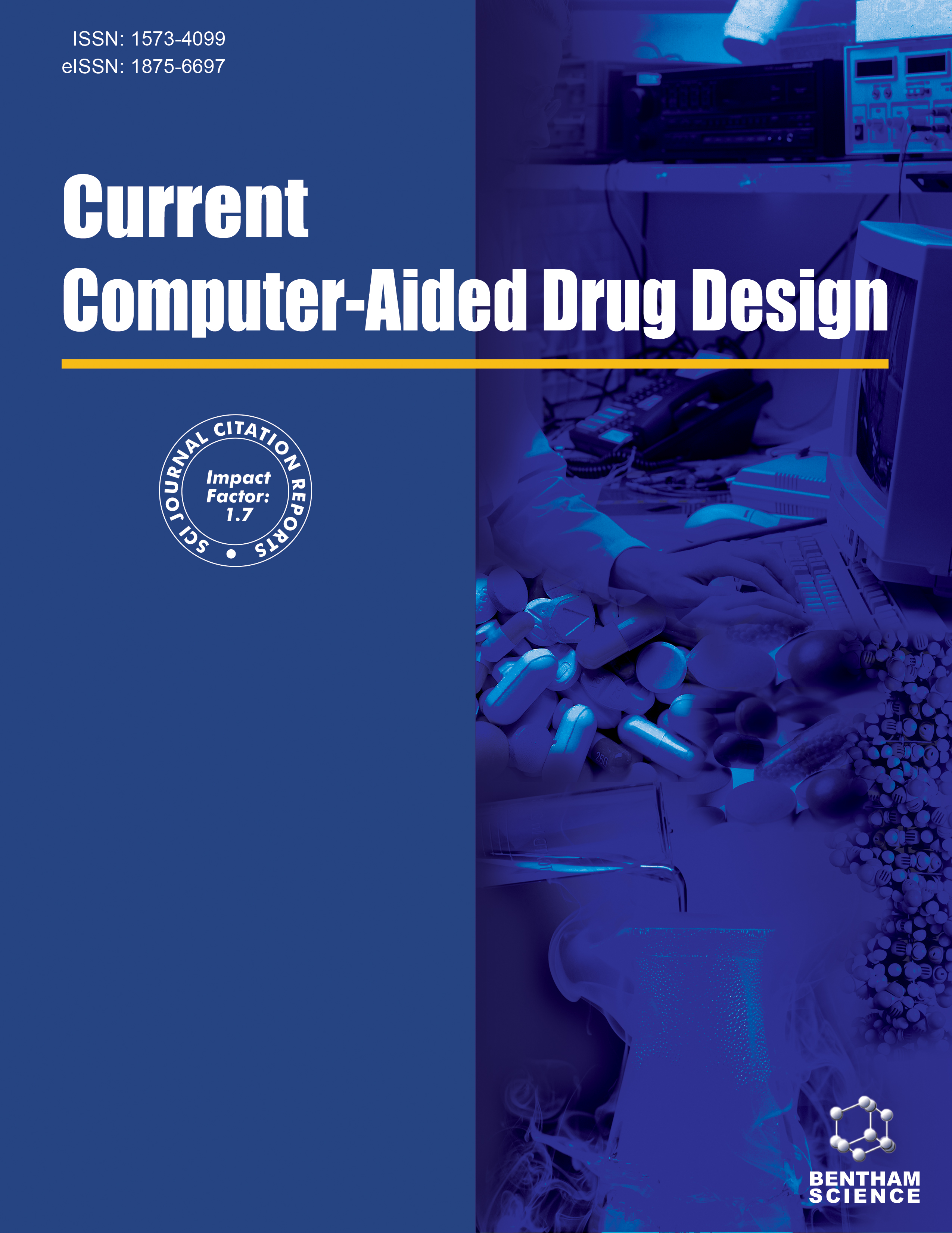- Home
- A-Z Publications
- Current Computer - Aided Drug Design
- Previous Issues
- Volume 7, Issue 2, 2011
Current Computer - Aided Drug Design - Volume 7, Issue 2, 2011
Volume 7, Issue 2, 2011
-
-
Editorial [Hot Topic: Applications of Graph Theory, Network Theory, and Chemotopology to Structure-Activity Relationships and Characterization of Metabolic Processes (Guest Editors: Subhash C. Basak and Guillermo Restrepo)]
More LessAuthors: Guillermo Restrepo and Subhash C. BasakUnderstanding how drugs cause the desired effect on the organism is of utmost importance for drug design. This is not only a scientific motto, but also an economic issue which pharmaceutical companies have comprehended quite well. Understanding the relationship between the structure of a substance and its biological activity is critical for drug discovery. A wealth of knowledge has been generated to grasp such relationship Read More
-
-
-
On Molecular Graph Comparison
More LessAuthors: Jenny A. Melo and Edgar DazaSince the last half of the nineteenth century, molecular graphs have been present in several branches of chemistry. When used for molecular structure representation, they have been compared after mapping the corresponding graphs into mathematical objects. However, direct molecular comparison of molecular graphs is a research field less explored. The goal of this mini-review is to show some distance and similarity co Read More
-
-
-
Chemotopology: Beyond Neighbourhoods
More LessAuthors: Guillermo Restrepo and Heber MesaWe have shown in several papers the importance of using topology, particularly set-point topology, to deal with chemical questions related to the concept of similarity. The procedure developed has been called “chemotopology” and it has been applied to different chemical sets e.g. chemical elements, benzimidazoles, sterorids, amino acids and hydrides. The idea behind chemotopology is to run a hierarchical cluster analysis s Read More
-
-
-
Quantitative Structure-Activity Relationships for Anticancer Activity of 2- Phenylindoles Using Mathematical Molecular Descriptors
More LessAuthors: Subhash C. Basak, Qianhong Zhu and Denise MillsCalculated atom pairs (APs) and a set of 369 topological indices (TIs) calculated by POLLY, Triplet, and Molconn-Z software were used to develop QSARs for anticancer activity of a group of 2-phenyl indoles. The TIs included both topostructural (TS) and topochemical (TC) indices. Results show that ridge regression using TS indices, TC indices, and atom pairs produced high-quality models for the prediction of anticancer activity Read More
-
-
-
Comparison of QSARs and Characterization of Structural Basis of Bioactivity Using Partial Order Theory and Formal Concept Analysis: A Case Study with Mutagenicity
More LessAuthors: Guillermo Restrepo, Subhash C. Basak and Denise MillsFifteen quantitative structure-activity relationship (QSAR) models developed by various authors for the prediction of mutagenicity of aromatic and heteroaromatic amines were analyzed and thirteen of them, based on 95 amines, were compared using their respective statistics and order theory (Hasse Diagram Technique, HDT) to obtain an ordering of QSAR models. The technique of Formal Concept Analysis (FCA) was applied to Read More
-
-
-
Metabolic Networks: Beyond the Graph
More LessAuthors: Andres Bernal and Edgar DazaDrugs are devised to enter into the metabolism of an organism in order to produce a desired effect. From the chemical point of view, cellular metabolism is constituted by a complex network of reactions transforming metabolites one in each other. Knowledge on the structure of this network could help to develop novel methods for drug design, and to comprehend the root of known unexpected side effects. Many larg Read More
-
-
-
Partially Ordered Sets: Ranking and Prediction of Substances' Properties
More LessAuthors: Guillermo Restrepo, Rainer Bruggemann and Douglas J. KleinThere are at least two significant applications of partial order theory in chemistry: Ranking methods and substances' properties prediction. In both cases, a set of objects is endowed with a partial order relation e.g. “more polluting than”, “can be obtained from”, “more reactive than” etc. The couple of set and partial order relation is known in mathematics as a partially ordered set (poset). Ranking methods, such as the Hasse Read More
-
-
-
Molecular Docking: A Powerful Approach for Structure-Based Drug Discovery
More LessAuthors: Xuan-Yu Meng, Hong-Xing Zhang, Mihaly Mezei and Meng CuiMolecular docking has become an increasingly important tool for drug discovery. In this review, we present a brief introduction of the available molecular docking methods, and their development and applications in drug discovery. The relevant basic theories, including sampling algorithms and scoring functions, are summarized. The differences in and performance of available docking software are also discussed. Flexible re Read More
-
Volumes & issues
-
Volume 21 (2025)
-
Volume 20 (2024)
-
Volume 19 (2023)
-
Volume 18 (2022)
-
Volume 17 (2021)
-
Volume 16 (2020)
-
Volume 15 (2019)
-
Volume 14 (2018)
-
Volume 13 (2017)
-
Volume 12 (2016)
-
Volume 11 (2015)
-
Volume 10 (2014)
-
Volume 9 (2013)
-
Volume 8 (2012)
-
Volume 7 (2011)
-
Volume 6 (2010)
-
Volume 5 (2009)
-
Volume 4 (2008)
-
Volume 3 (2007)
-
Volume 2 (2006)
-
Volume 1 (2005)
Most Read This Month
Article
content/journals/cad
Journal
10
5
false
en


